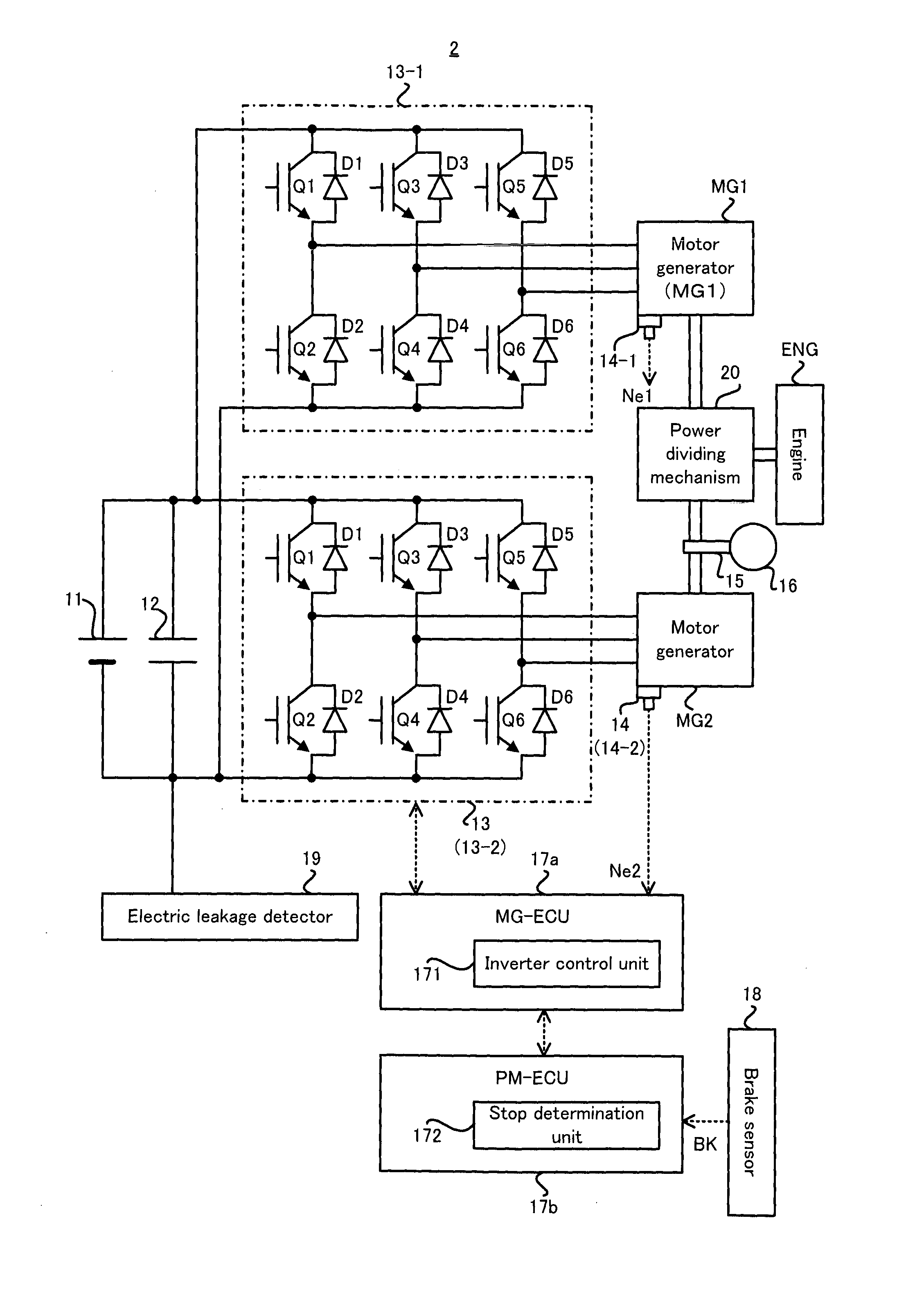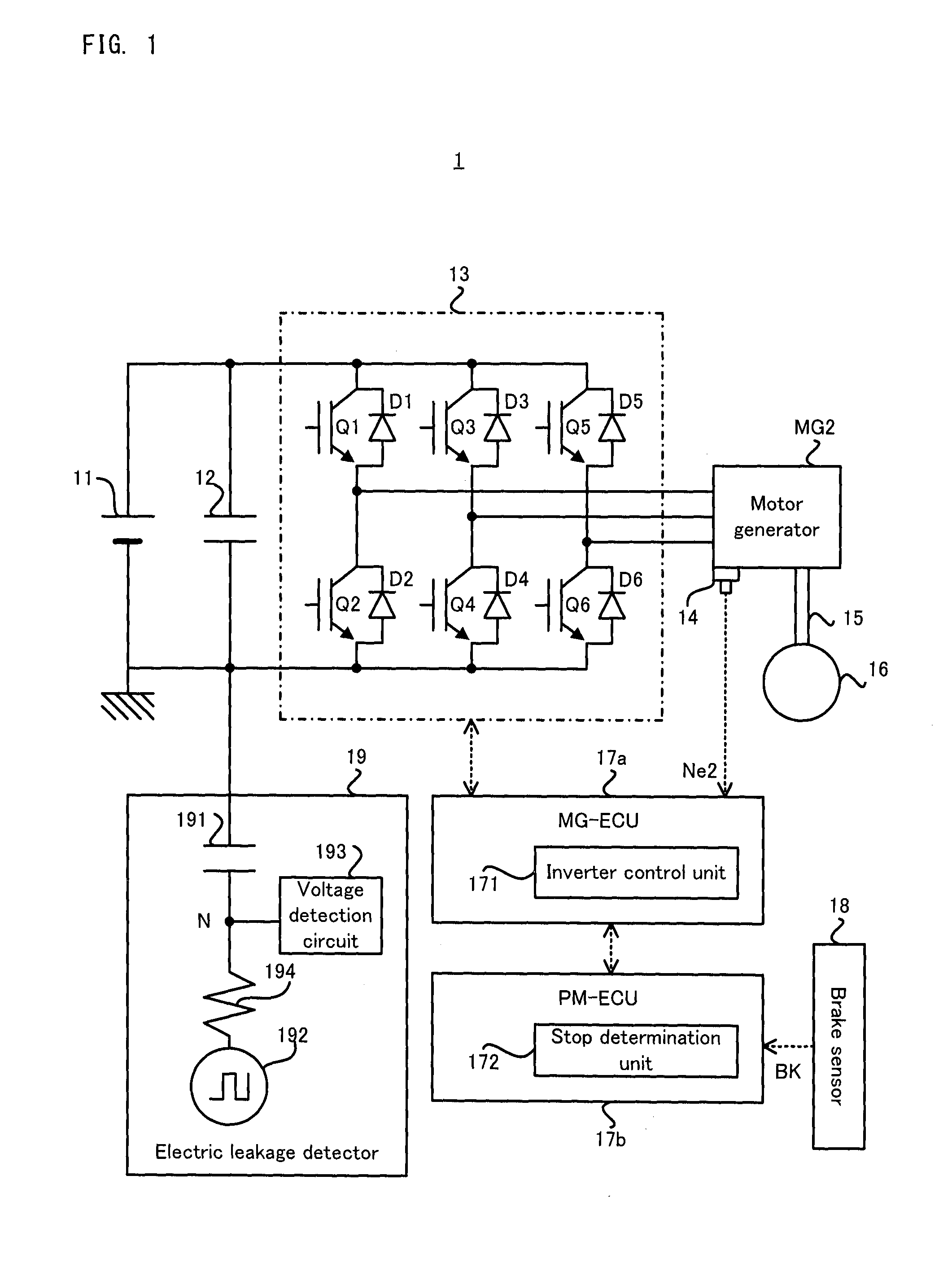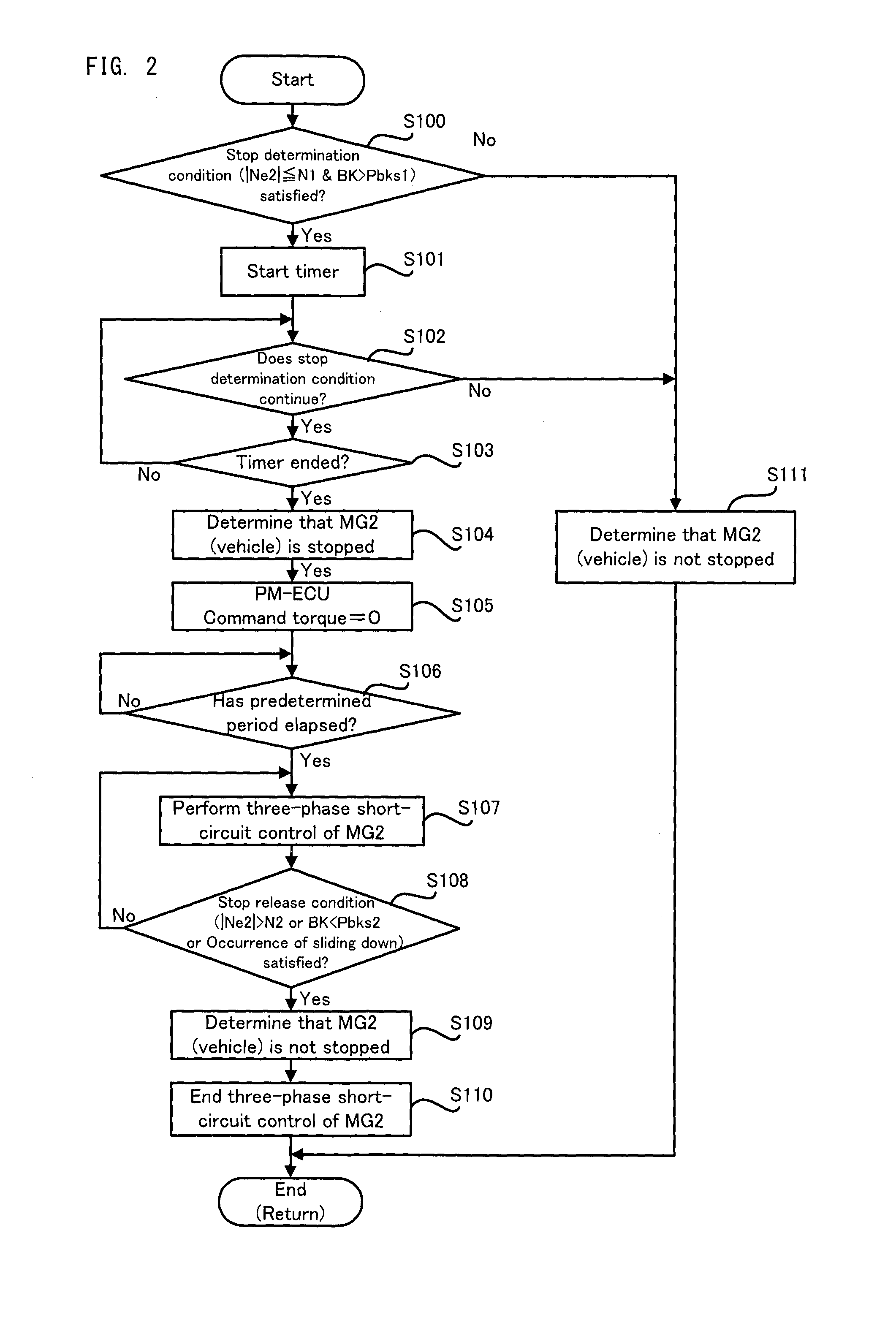Vehicle control apparatus
a technology of control apparatus and control device, which is applied in the direction of motor/generator/converter stopper, dynamo-electric converter control, stopping arrangement, etc., can solve the problems of sudden decrease of the rotation (or completely zero), and the output torque of the electric motor becomes zero, so as to achieve more accurate
- Summary
- Abstract
- Description
- Claims
- Application Information
AI Technical Summary
Benefits of technology
Problems solved by technology
Method used
Image
Examples
first embodiment
(1) First Embodiment
[0041]Firstly, with reference to FIG. 1 to FIG. 5, a first embodiment will be explained.
(1-1) Configuration of Vehicle in First Embodiment
[0042]Firstly, with reference to FIG. 1, a configuration of a vehicle 1 in the first embodiment will be explained. FIG. 1 is a block diagram illustrating a configuration of a vehicle in a first embodiment.
[0043]As illustrated in FIG. 1, the vehicle 1 is provided with a direct current (DC) power supply 11, a smoothing capacitor 12, an inverter 13 which is one specific example of the “power converter”, a motor generator MG2 which is one specific example of the “three-phase alternating current (AC) motor”, a rotation angle sensor 14, a drive shaft 15, a driving wheel 16, a MG-ECU 17a which is one specific example of the “lower controlling device”, and a PM-ECU 17b which is one specific example of the “upper controlling device”, and a brake sensor 18 and an electric leakage detector 19.
[0044]The DC power supply 11 is a chargeable p...
second embodiment
(2) Second Embodiment
[0115]Next, a second embodiment will be explained with reference to FIG. 6 and FIG. 7. In the second embodiment, the operation is partially different from that of the first embodiment described above, and the other part is substantially the same. Thus, hereinafter, the different part from the first embodiment will be explained in detail, and the explanation of the duplicate part will be omitted as occasion demands.
[0116]Firstly, with reference to FIG. 6, a flow of the stop determination operation performed in the vehicle 1 in the second embodiment and accompanying three-phase short-circuit control will be explained. FIG. 6 is a flowchart illustrating the flow of the stop determination operation in the second embodiment.
[0117]As illustrated in FIG. 6, if the stop determination operation is started in the vehicle 1 in the second embodiment, the stop determination unit 172 performs each process, in order, from a step S200 to a step S204 which are the same as the st...
third embodiment
(3) Third Embodiment
[0124]Next, a third embodiment will be explained with reference to FIG. 8 and FIG. 9. In the third embodiment, the operation is partially different from those of the first and second embodiments described above, and the other part is substantially the same. Thus, hereinafter, the different part from the first and second embodiments will be explained in detail, and the explanation of the duplicate part will be omitted as occasion demands.
[0125]In the third embodiment, the MG-ECU 17a is configured to perform addition control of the torque independently of the PM-ECU 17b. Hereinafter, the addition control will be specifically explained, and its possible problem will be explained by using a second comparative example illustrated in FIG. 8. FIG. 8 is a chart illustrating a change in the torque command value when a vehicle in a second comparative example stops. FIG. 8 illustrates as if the HV torque command and the MG torque command when the vehicle stops linearly decr...
PUM
 Login to View More
Login to View More Abstract
Description
Claims
Application Information
 Login to View More
Login to View More - R&D
- Intellectual Property
- Life Sciences
- Materials
- Tech Scout
- Unparalleled Data Quality
- Higher Quality Content
- 60% Fewer Hallucinations
Browse by: Latest US Patents, China's latest patents, Technical Efficacy Thesaurus, Application Domain, Technology Topic, Popular Technical Reports.
© 2025 PatSnap. All rights reserved.Legal|Privacy policy|Modern Slavery Act Transparency Statement|Sitemap|About US| Contact US: help@patsnap.com



